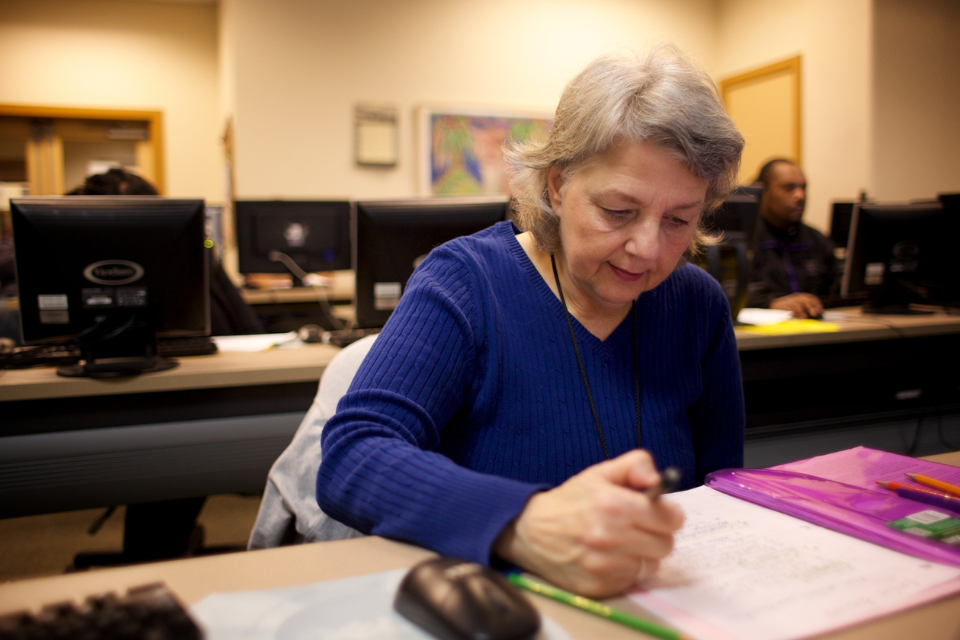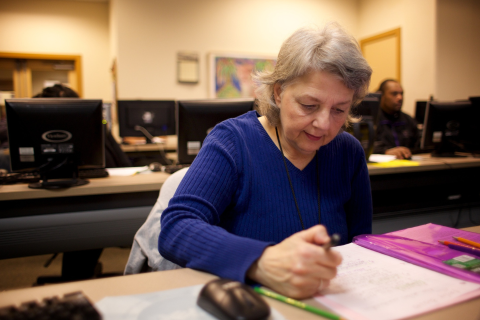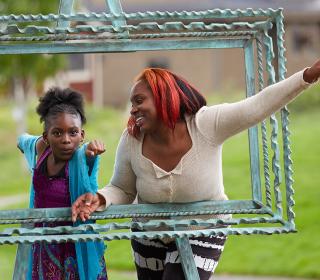Social services exist to assist people with housing, financial support, food security, and more, but how helpful are these services when the intended audience is unable to access them?
For senior citizens, applying to these programs is its own challenge. Lack of internet or a computer, inexperience with online forms and/or technology, inability to speak or read English, not knowing where to go or who to contact for help — any one of these factors can be a deterrent to seniors looking for help. The overwhelming stress and frustration caused by paperwork and the application process alone is enough for many seniors to shy away from applying for these programs at all, no matter how badly they need help.
Reluctance to ask for help
Nearly 14 million adults age 60+ who qualify for SNAP (food stamps) don’t sign up, and over 3 million adults age 65+ aren’t enrolled in Medicare, despite their eligibility. Although a percentage of these individuals are unaware of the benefits they can receive, some are reluctant to ask for help. There are a variety of factors that contribute to this reluctance to request help — fear of losing independence, lack of trust, fear of giving up control, and desire to not be a burden — however, even seniors who do request help often have a difficult time accessing the benefits they need.
YWCA Lead Case Manager Dyaneshia Sleep says technology is one of the biggest barriers for seniors. “More things are going online after COVID; there’s less in-person care and less one-on-one services. Now, everything’s over the phone or automated or online. DSHS is largely working from home, and that’s been a huge issue for a lot of seniors predominantly.”
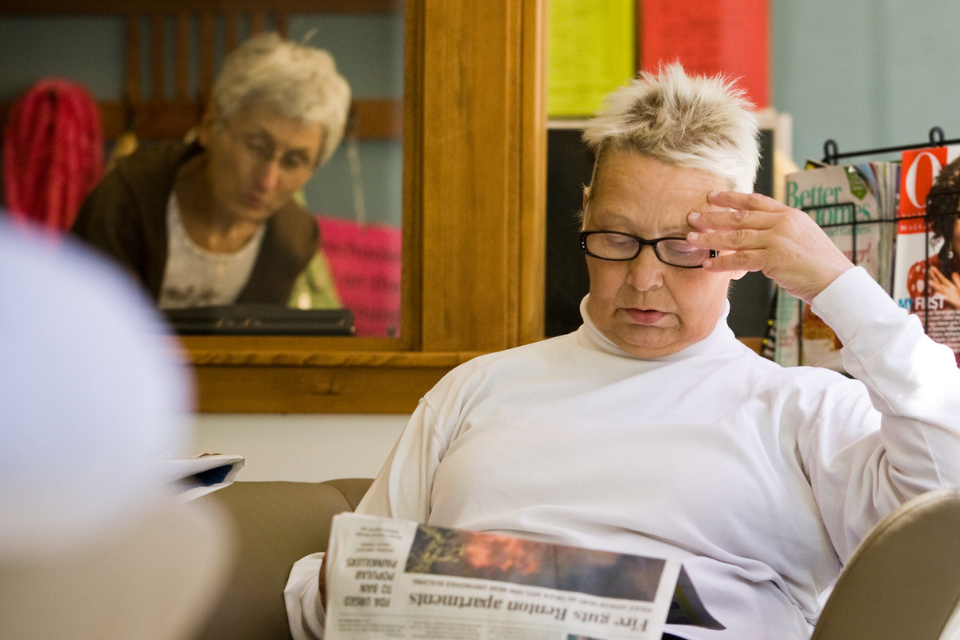
Although there are online options for program applications, seniors struggle with things being predominantly online these days. To people who grew up without the internet, navigating a website or filling out an online application isn’t self-explanatory. Although the pandemic gave some older individuals an opportunity to experiment with technology they usually wouldn’t use in order to stay in contact with family and friends, the pandemic also exacerbated the divide between those with tech literacy and those without.
For seniors with hearing problems, trying to understand people over the phone can be a challenge, and trying to communicate their questions and issues is a frustrating ordeal that many are unwilling to go through. “They get on the phone and they get sent from place to place,” says Dyaneshia, “And with the reduced in-person workforce, even if they go in person, they have to wait for hours on end just to maybe get the help they need.”
Even for programs that still offer in-person applications, transportation is an issue for many seniors. Some don’t have cars or the ability to drive, and public transportation can be a long, arduous process, especially for seniors with disabilities and mobility impairments. In Dyaneshia’s experience, “Activities even in a one mile neighborhood is a big barrier, and being in the house all the time can really create depression and sadness.”
Resource disparities
Money is often the determining factor of how independent and comfortable a person can be after retirement. But financial security isn’t a realistic prospect for everyone, particularly since there’s a disparity in the rates of financial literacy across racial and ethnic groups in the US. On average, over 53% of Black workers and about 64% of Latino workers age 18 - 64 do not have access to workplace retirement plans, whereas about 42% of white workers do not. Since the pandemic, Black and Latino workers have much higher rates of unemployment than white workers, and there’s evidence to suggest that COVID-19 will cause many Americans to retire early.

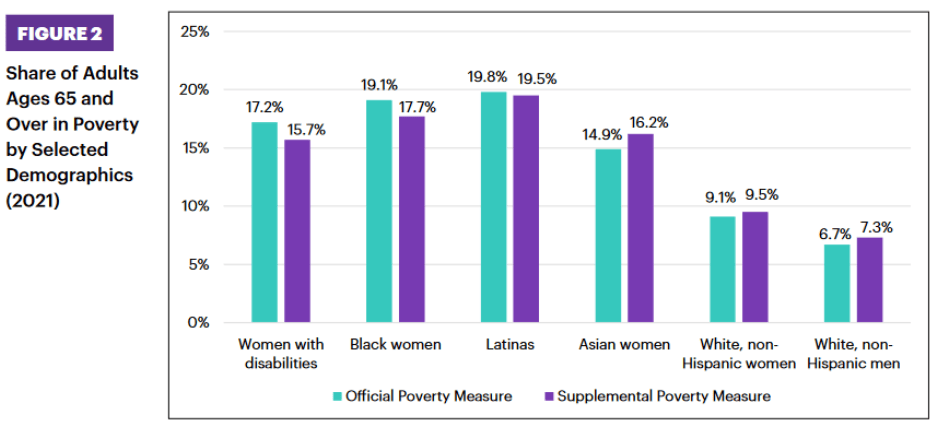
(via Justice In Aging)
But these disparities were prevalent even before the pandemic. The racial wealth gap is the largest form of economic inequality in America, with white college graduates on average making seven times more than Black graduates and nearly four times more than Hispanic graduates. With the gender wage gap and full-time working women with bachelor's degrees earning 26% less than their male coworkers on average, BIPOC women in particular are more likely to experience financial insecurity and poverty than their male counterparts by the time they reach the age of retirement — if not before.
Isolation and Support Networks
Loneliness and social isolation are two major issues for all seniors, and this issue was worsened by the COVID-19 pandemic. YWCA’s Resident Life Coaches and Lead Case Managers like Caprice Strange and Dyaneshia Sleep try to support seniors through all obstacles, including loneliness.
“I feel like being hands-on, observing, having conversations with and checking in with our seniors is most important," says Caprice. "We meet with clients once a month, but our doors are always open. We sit and listen and figure out what barriers they’re facing.” Life Coaches like Caprice work to create support systems for their seniors and gather other programs that offer case workers. “Often, rental assistance or food assistance [is the biggest need]. Food necessities are a big need in our community.” For people who don’t have family living with them or close by, even things like grocery shopping can be a challenge. “We try and set [seniors] up with a caregiver support system and a companion who helps them with those barriers.”
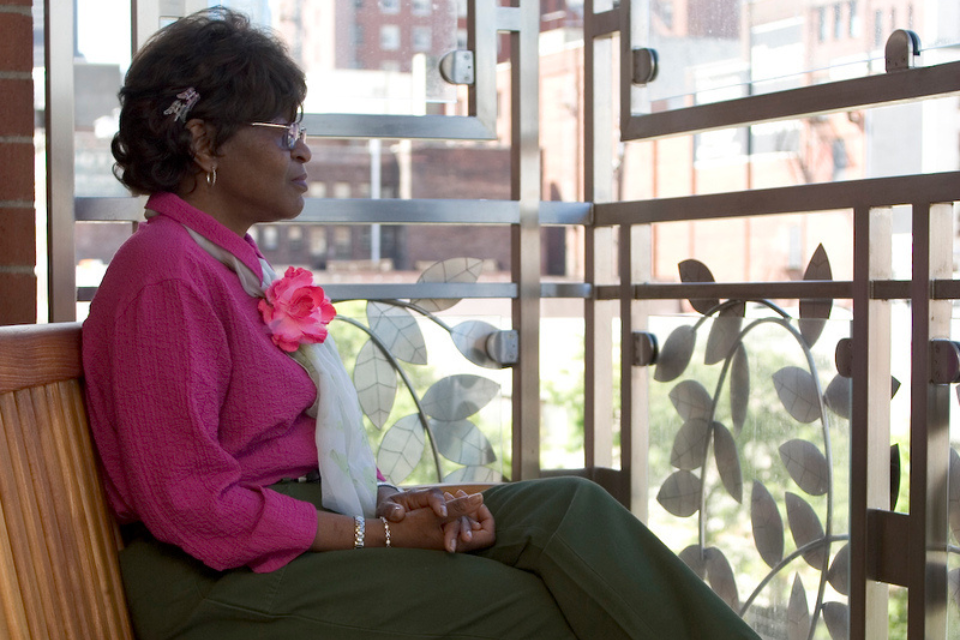
YWCA’s Life Coaches are very aware that some of their seniors may need extra encouragement or guidance on how to ask for help. Caprice says, “They’ve been adults and grownups for decades, and we want to give them that comfort zone. [...] ‘What do you need from these support groups? What are the barriers stopping you from getting that? How can we help?’”
Case management is a huge need for seniors, particularly since 1 in 10 seniors experience some kind of elder abuse. Seniors need advocates who can help them access necessary resources and help them when their voices aren’t heard. YWCA’s Life Coaches help seniors achieve stability, and when their basic needs are met, they assist with other aspects.
“I have some clients who are learning how to use Word at Seattle Community College and Highline College,” says Caprice. “For ESL courses or classes that keep them computer savvy, we give [seniors] bus tickets and whatever extra support they need. [...] Taking classes at those schools makes it easier to build a community and transfer and enroll into college to further succeed.”
How to help
Unfortunately, there is no quick and easy way to make resources automatically more accessible for seniors, but Caprice and Dyaneshia have suggestions on where to start.
- Having social service workers like DSHS (Department of Social and Health Services) visit locations or housing properties where YWCA Life Coaches work with seniors would make life significantly easier. Having four people meet with them at once or even having one-on-one conversations with workers would save seniors significant time and frustration.
- More in-home care resources for seniors is a necessity. Around 850,000 unpaid caregivers provide about 80% of the long-term care needs in Washington, but for seniors without any family or friends to rely on, an alternative is needed. Seniors who need assistance at home are often put on long waiting lists, and they’re left to fend for themselves in the meantime.
- Resources made to help seniors should have online applications and websites that are more senior-friendly.
- For people who don’t have a Life Coach, implementing people in senior centers who could help residents get connected with services and Life Coaches at YWCA would help a lot of seniors who don’t know where to start.
- Making seniors a priority by allowing elders of a certain age and above to make an appointments to do in-person applications or appointments instead of coming in on a first-come first-serve basis, where they have to sit for hours waiting.
- More transportation resources. Although a few resources already exist, they aren't viable for all seniors.
Learn how you can get involved with our volunteer services program and help local seniors in our community.

Ana Rodriguez-Knutsen is the Content Specialist for YWCA's Marketing & Editorial team. From fiction writing to advocacy work, Ana works with an intersectional mindset to uplift and amplify the voices of underrepresented communities.
We share the stories of our program participants, programs, and staff, as well as news about the agency and what’s happening in our King and Snohomish community.
